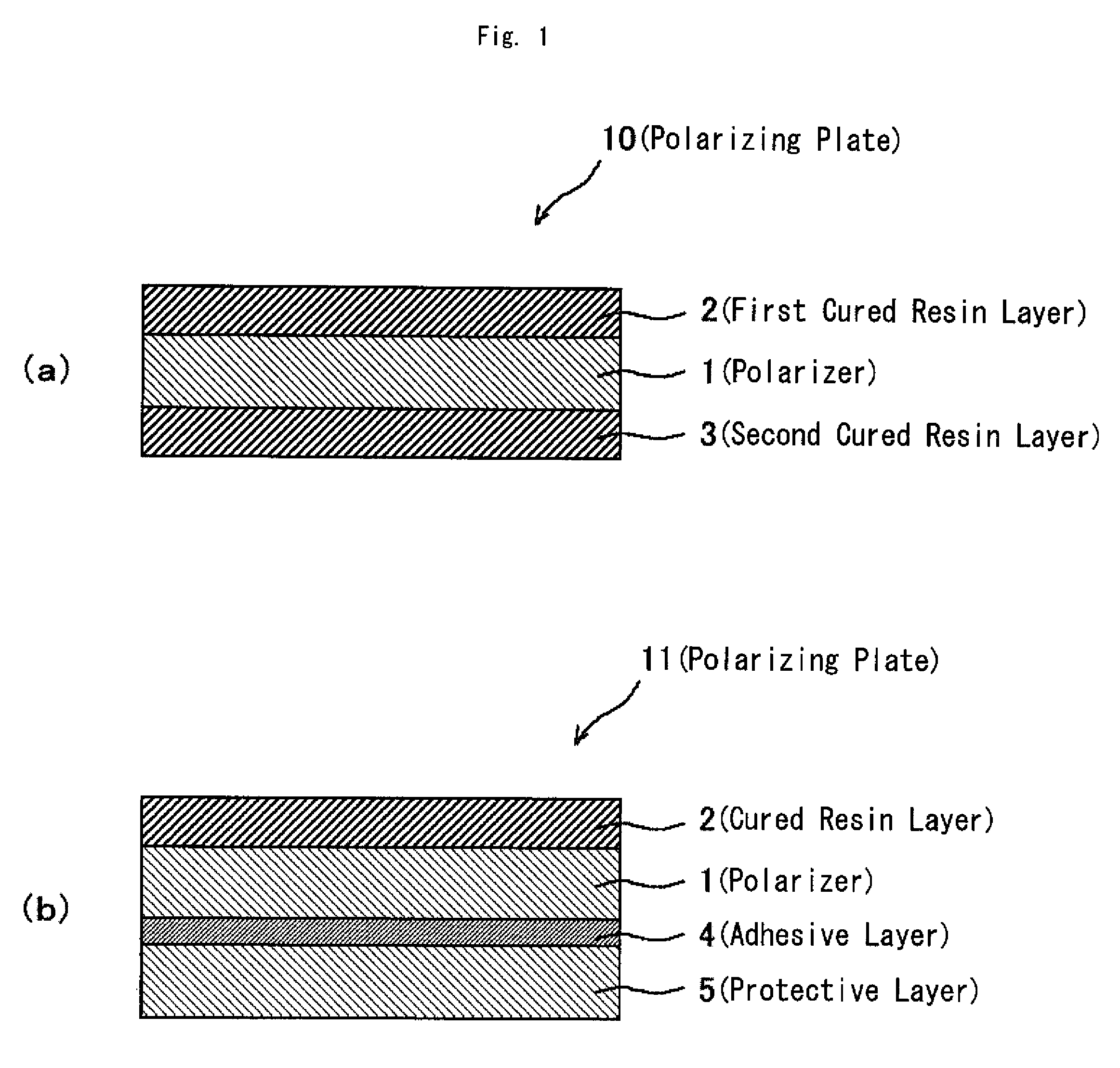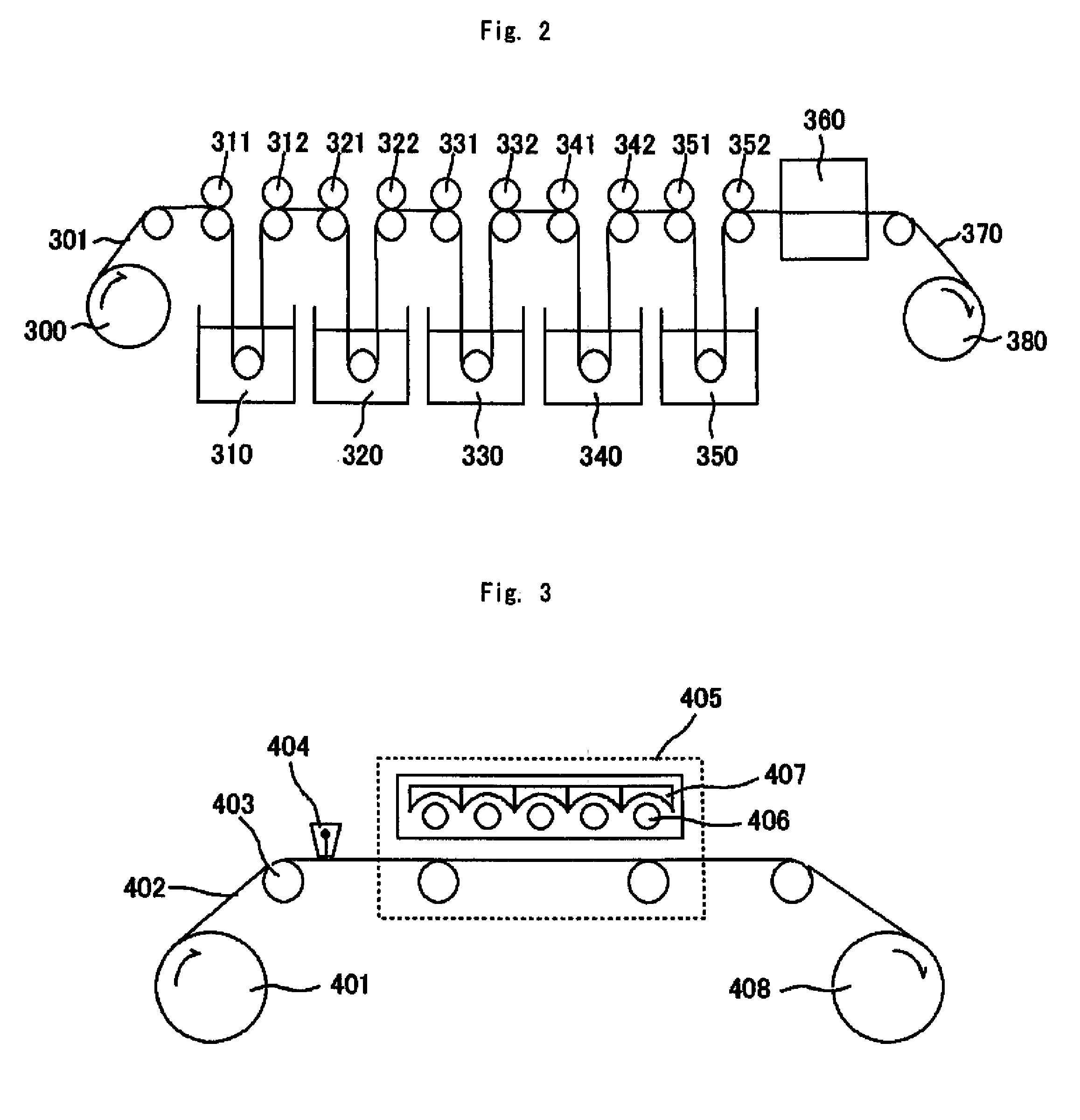Polarizing plate and image display including the same
a technology of image display and polarizing plate, which is applied in the direction of polarizing elements, thin material handling, instruments, etc., can solve the problems of polarization properties, and achieve the effects of high hardness, excellent optical properties, and high hardness
- Summary
- Abstract
- Description
- Claims
- Application Information
AI Technical Summary
Benefits of technology
Problems solved by technology
Method used
Image
Examples
example 1
[0101]A polymer film (with a thickness of 75 μm, “VF-PS#7500” (trade name) manufactured by KURARAY CO., LTD.) whose main component was polyvinyl alcohol resin was immersed in five baths under the following conditions (1) to (5), while being tensioned in the longitudinal direction thereof. The film was drawn so that the final draw magnification was 6.2 times the original film length. This drawn film was dried for one minute in an air circulation drying oven with a temperature of 40° C. Thus a polarizer A with a thickness of 30 μm (with a composite elastic modulus of 10.9 GPa) was prepared. In this polarizer A, the contents of the respective elements were as follows: iodine content=3.0% by weight, potassium content=0.6% by weight, and boron content=2.0% by weight.
(1) Swelling bath: 30° C. pure water
(2) Dye bath: 30° C. aqueous solution containing 0.03 part by weight of iodine and 0.2 part by weight of potassium iodide, with respect to 100 parts by weight of water
(3) First crosslinking...
example 2
[0105]A polarizing plate A-2 was produced in the same manner as in Example 1 except that the cured resin layer had a thickness of 10 μm. In the polarizing plate A-2, the transmittance, the polarization degree, and the composite elastic modulus of the cured resin layer were the same as those of Example 1. The pencil hardness of the cured resin layer surface of the polarizing plate A-2 was 7 H. After the polarizing plate A-2 was stored in a room at 23° C. for 24 hours, the state of the cured resin layer surface was observed visually. As a result, no cracks were observed at the cured resin layer surface.
example 3
[0106]A polarizing plate A-3 was produced in the same manner as in Example 1 except that the cured resin layer had a thickness of 15 μm. In the polarizing plate A-3, the transmittance, the polarization degree, and the composite elastic modulus of the cured resin layer were the same as those of Example 1. The pencil hardness of the cured resin layer surface of the polarizing plate A-3 was 9 H. After the polarizing plate A-3 was stored in a room at 23° C. for 24 hours, the state of the cured resin layer surface was observed visually. As a result, no cracks were observed at the cured resin layer surface.
PUM
| Property | Measurement | Unit |
|---|---|---|
| elastic modulus | aaaaa | aaaaa |
| thickness | aaaaa | aaaaa |
| thickness | aaaaa | aaaaa |
Abstract
Description
Claims
Application Information
 Login to View More
Login to View More - R&D
- Intellectual Property
- Life Sciences
- Materials
- Tech Scout
- Unparalleled Data Quality
- Higher Quality Content
- 60% Fewer Hallucinations
Browse by: Latest US Patents, China's latest patents, Technical Efficacy Thesaurus, Application Domain, Technology Topic, Popular Technical Reports.
© 2025 PatSnap. All rights reserved.Legal|Privacy policy|Modern Slavery Act Transparency Statement|Sitemap|About US| Contact US: help@patsnap.com



